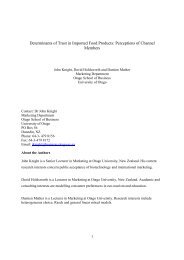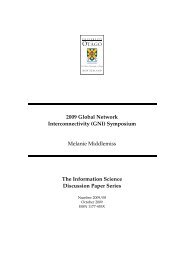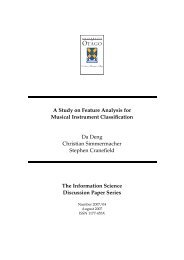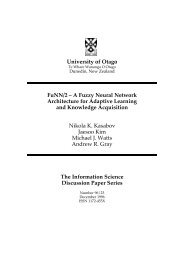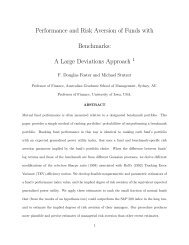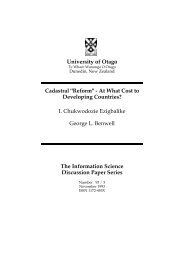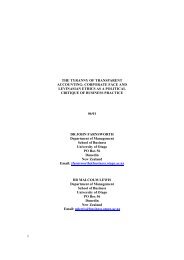Where is R2P grounded in international law? Anne-Marie Judson A ...
Where is R2P grounded in international law? Anne-Marie Judson A ...
Where is R2P grounded in international law? Anne-Marie Judson A ...
You also want an ePaper? Increase the reach of your titles
YUMPU automatically turns print PDFs into web optimized ePapers that Google loves.
aga<strong>in</strong>st Women (2005). In addition some other similar human rights conventions are<br />
considered customary <strong>in</strong>clud<strong>in</strong>g the International Convention on the Elim<strong>in</strong>ation of All Forms<br />
of Racial D<strong>is</strong>crim<strong>in</strong>ation (1966) with 174 parties to the Convention. The International<br />
Convention on Civil and Political Rights (1966), The International Convention on the Suppression<br />
and Pun<strong>is</strong>hment of the Crime of Apartheid, (1973) with 107 parties and the Convention aga<strong>in</strong>st<br />
Torture and Other Cruel, Inhuman or Degrad<strong>in</strong>g treatment or Pun<strong>is</strong>hment (1984) with 149 parties<br />
are also considered customary by the ICJ.<br />
Overall it <strong>is</strong> clearly evident that the general consensus on customary <strong>in</strong>ternational <strong>law</strong><br />
<strong>is</strong> for the protection of collective groups, <strong>in</strong>dividuals <strong>in</strong>clud<strong>in</strong>g men, women and<br />
children <strong>in</strong> time of war as well as <strong>in</strong> time of peace. It also shows that a state’s<br />
responsibility <strong>in</strong> terms of customary <strong>law</strong> <strong>is</strong> broad and envelops a large portion of<br />
general <strong>in</strong>ternational <strong>law</strong>. The message of customary <strong>in</strong>ternational <strong>law</strong> <strong>is</strong> clear. “Any<br />
person who commits an act which constitutes a crime under <strong>in</strong>ternational <strong>law</strong> <strong>is</strong><br />
responsible and liable for pun<strong>is</strong>hment.” 197 Customary <strong>law</strong>s <strong>in</strong>clude any convention or<br />
treaty that generates responsibility <strong>in</strong> <strong>law</strong> to states regard<strong>in</strong>g crimes aga<strong>in</strong>st humanity,<br />
war crimes, ethnic cleans<strong>in</strong>g and genocide, among other breaches of <strong>in</strong>ternational <strong>law</strong><br />
aga<strong>in</strong>st communities, civilians, pr<strong>is</strong>oners of war or hostages <strong>in</strong> time of war.<br />
Peremptory breaches <strong>in</strong>clude grave crimes aga<strong>in</strong>st humanity or any serious breach of<br />
general <strong>in</strong>ternational <strong>law</strong> affect<strong>in</strong>g the stability of <strong>in</strong>ternational peace and security.<br />
The next section looks <strong>in</strong>to more specific descriptions of crimes aga<strong>in</strong>st humanity, war<br />
crimes, ethnic cleans<strong>in</strong>g and genocide <strong>in</strong> order to def<strong>in</strong>e the limitations of <strong>in</strong>tervention<br />
<strong>in</strong> regards to general customary <strong>law</strong> with a jus cogens or peremptory nature, relat<strong>in</strong>g<br />
directly to <strong>R2P</strong> and the responsibility of the state to prevent and protect all civilians<br />
from grave crimes aga<strong>in</strong>st humanity, ethnic cleans<strong>in</strong>g, genocide and war crimes, as<br />
described <strong>in</strong> paragraph 138 of the World Summit outcome document.<br />
197 Pr<strong>in</strong>ciple 1 of the Charter of the Nuremberg Charter (1950) <br />
<br />
66




